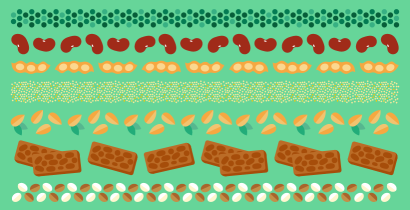What Are Proteins and What Is Their Function in the Body?
Last Updated : 16 December 2019Proteins are made up of many building blocks, known as amino acids. Our body needs dietary protein to supply amino acids for the growth and maintenance of our cells and tissues. Our dietary protein requirement changes throughout life. The European Food Safety Authority (EFSA) recommends adults consume at least 0.83 g of protein per kg body weight per day (e.g. 58 g/day for a 70 kg adult). Plant and animal-based proteins vary in their quality and digestibility, but this is not usually a concern for most people if their total protein meets their needs. We should aim to consume protein from a variety of sources that benefits both our health and the planets.
What are proteins made of?
Proteins are made up of many different amino acids linked together. There are twenty different of these amino acid building blocks commonly found in plants and animals. A typical protein is made up of 300 or more amino acids and the specific number and sequence of amino acids are unique to each protein. Rather like the alphabet, the amino acid 'letters' can be arranged in millions of different ways to create 'words' and an entire protein 'language'. Depending on the number and sequence of amino acids, the resulting protein will fold into a specific shape. This shape is very important as it will determine the protein’s function (e.g. muscle or enzyme). Every species, including humans, has its own characteristic proteins.
Amino acids are classified as either essential or non-essential. As the name suggests, essential amino acids cannot be produced by the body and therefore must come from our diet. Whereas, non-essential amino acids can be produced by the body and therefore do not need to come from the diet.
Table 1. Essential vs non-essential amino acids.
|
Essential amino acids |
Non-essential amino acids |
|
Histidine Isoleucine Leucine Lysine Methionine Phenylalanine Threonine Tryptophan Valine |
Alanine Arginine* Asparagine Aspartate Cysteine* Glutamate Glutamine* Glycine* Proline* Serine Taurine* Tyrosine* |
*these are conditionally essential amino acids, which means they are only essential under certain conditions (e.g. for new-borns).1
What do proteins do for the body?
Our bodies are made up of thousands of different proteins, each with a specific function. They make up the structural components of our cells and tissues as well as many enzymes, hormones and the active proteins secreted from immune cells (figure 1).
These body proteins are continually being repaired and replaced throughout our lives. This process (known as ‘protein synthesis’) requires a continuous supply of amino acids. Although some amino acids can be recycled from the breakdown of old body proteins, this process is imperfect. This means we must eat dietary protein to keep up with our body’s amino acid demand.
As protein is essential for cell and tissue growth, adequate intake of protein is particularly important during periods of rapid growth or increased demand, such as childhood, adolescence, pregnancy, and breastfeeding.1
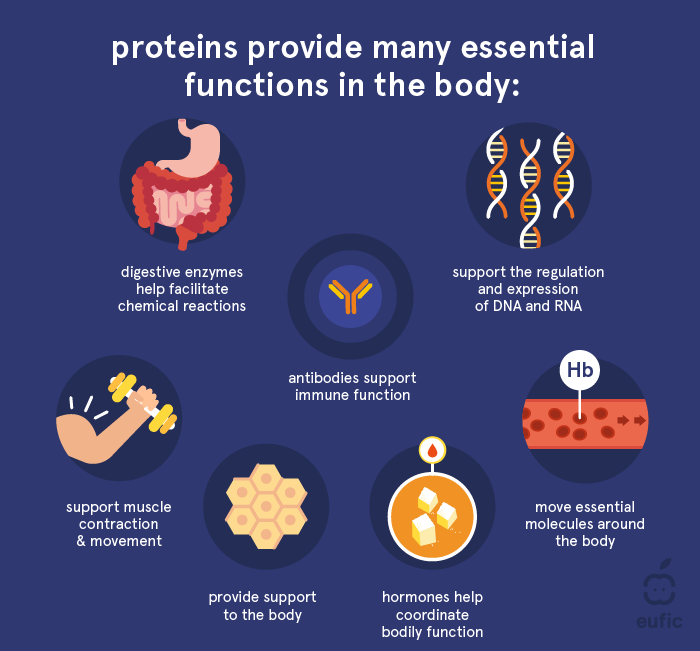
Figure 1. Functions of proteins in the body.
What foods are high in protein?
Protein can be found in both plant and animal-based foods. Figure 2 shows the protein content found in a typical serving of common animal and plant-based foods. For more information on how to estimate healthy portion sizes, see measuring portion sizes with your hands.
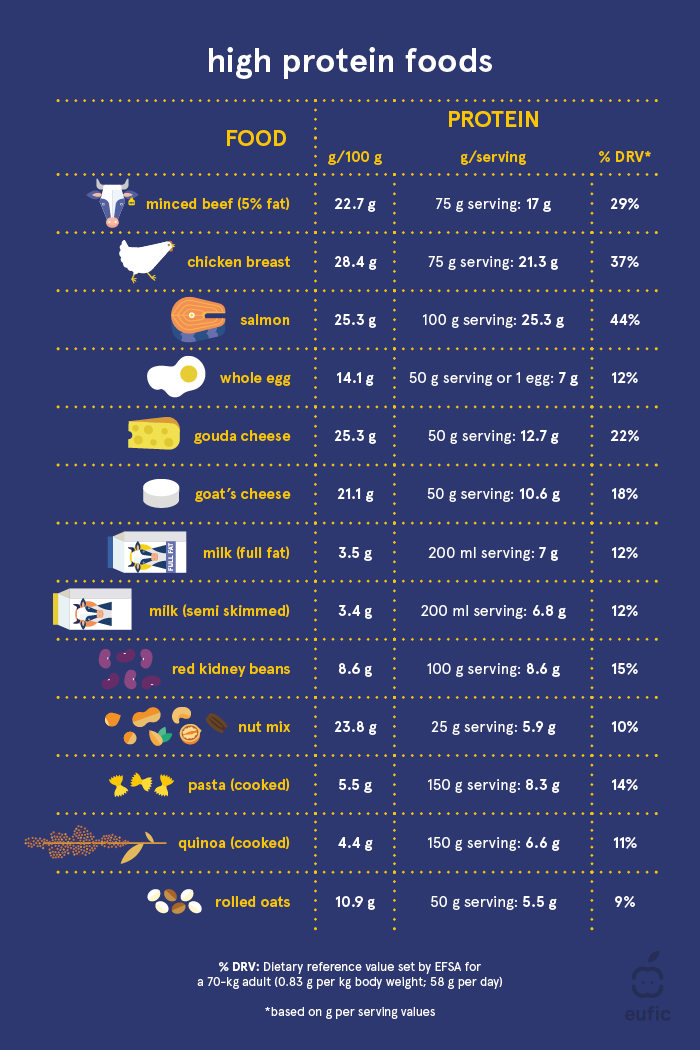
Figure 2. High protein foods.2
Is there a difference between animal and plant-based proteins?
As we can see in Figure 2, both animal and plant-based foods can be rich sources of protein. But do they have the same quality?
The quality of a protein can be defined in many ways; however, all definitions relate to the distribution and proportion of essential and non-essential amino acids they contain. In general, animal-based proteins are of higher quality as they contain higher proportions of essential amino acids compared to plant-based proteins.
There is a common misconception that plant-based proteins completely lack certain essential amino acids. In fact, most plant-based proteins will contain all 20 amino acids but tend to have a limited amount of certain essential amino acids, known as their limiting amino acid(s). This means, if a small number of plant foods are consumed as the only protein sources, they are unlikely to supply enough essential amino acids to meet our requirements. For people who consume little to no animal-based foods, such as vegans or vegetarians, it is important that they consume protein from sources with complementary limiting amino acids. For example, consuming rice (limited in lysine and thiamine but high in methionine) and beans (limited in methionine, but high in lysine and thiamine) will provide complementary amino acids that can help meet essential amino acid requirements.
Animal and plant-based proteins also differ in their bioavailability and digestibility. The digestible indispensable amino acid score (DIAAS) is the recommended method for determining dietary protein digestibility and is expressed in values below or sometimes even above 100.3 A DIAAS of over 100 indicates that the protein has very high digestibility and quality and is a good complement protein to those that have lower qualities. Animal-based proteins tend to have higher DIAAS scores compared to plant-based proteins (Table 2). As most people consume protein from a variety of sources the quality and digestibility of protein is not usually a concern.
Table 2. DIAAS and quality of different protein types 100g of food.3, 4
|
Protein Type |
DIAAS |
Quality |
|
Wheat |
40 |
Low |
|
Almond |
40 |
Low |
|
Rice |
59 |
Low |
|
Peas |
64 |
Low |
|
Chickpea |
83 |
medium |
|
Chicken breast |
108 |
High |
|
Egg |
113 |
High |
|
Whole milk |
114 |
High |
How much protein should we eat every day?
EFSA has developed dietary reference values (DRVs) for protein. The DRVs for protein at different life stages are summarised in table 3. For an average adult, the recommendation is to consume at least 0.83 g of protein for every kilogram of body weight per day.1 In other words, a 70 kg adult should aim to eat at least 58 g of protein everyday day. This is the equivalent to the protein found in around 200 g of chicken breast or 240 grams of mixed nuts.
During periods of growth, such as childhood, pregnancy, and breastfeeding, protein requirements are relatively high.1
Table 3. Dietary reference values for life stages.1 BW: body weight.
|
|
Reference Value |
g/day 70 kg adult |
|
Childhood (12 months – 17 years) |
1.14 – 0.83 g/kg BW |
- |
|
Adults (18-65 years) |
0.83 g/kg BW |
58g |
|
Elderly (> 65 years) |
0.83 g/kg BW |
58g |
|
Pregnancy |
0.83 g/kg BW |
58g |
|
1st trimester |
+ 1g per day |
59g |
|
2nd trimester |
+ 9 g per day |
67g |
|
3rd trimester |
+ 28 g per day |
86g |
|
Breastfeeding (0-6 months) |
+ 19 g per day |
77g |
|
Breastfeeding (> 6months) |
+13 g per day |
71g |
How much protein do we eat every day?
In general, Europeans eat enough protein and deficiency is rare among most developed countries (figure 3). As the diet of Europeans already exceeds the required level, EFSA has not recommended an increase in current protein intakes.1
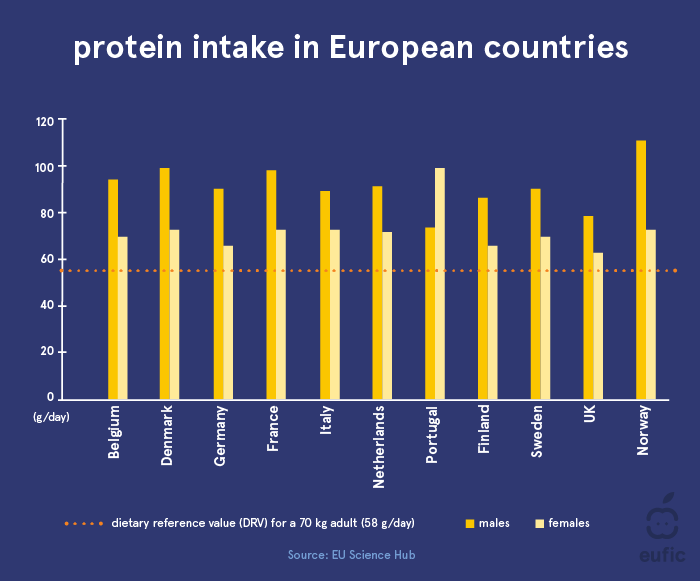
Figure 3. Protein intake across European countries.
What are the health benefits of protein?
Eating enough protein to meet our bodies’ requirements is important for many body functions. However, there is evidence to suggest that in certain situations increasing protein intake above required levels could provide additional health benefits.
Protein and Weight Control
Eating protein-rich foods has been shown to increase our feeling of fullness (also known as satiety) more than foods high in fat or carbohydrate. There is good evidence from short term studies that diets high in protein (i.e. 1.2 – 1.6 g/kg per day; 84 – 112 g per day for a 70 kg adult) can help reduce overall calorie intake and prompt weight loss. 5 However, the evidence for long-term weight maintenance is less clear.5 Like all diets, a high protein diet is only effective if it is stuck to, which can be difficult for some people and low adherence may partly explain the limited benefit observed for long term weight maintenance.5
Protein and sarcopenia
Sarcopenia is a disorder characterised by the progressive loss of muscle mass and physical function that is commonly associated with older adults. Sarcopenia is associated with increased frailty, risk of falls, functional decline and even early death.6 As protein is essential for the repair and maintenance of muscle mass, it is no surprise that low intake of protein is associated with an increased risk of developing sarcopenia.6 Similarly, increasing protein intake, as well as increasing physical activity can help maintain muscle mass and strength as we age, decreasing our risk of sarcopenia and skeletal disorders.
Protein and athletic performance
Protein has long been associated with athletic performance. Protein plays a key role in helping to repair and strengthen muscle tissue after exercise. Although protein is critical for building muscle, to maximise the benefits it should be considered in the context of the whole diet, which includes the right amount of carbohydrates, fats, vitamins and minerals. Optimum protein intake will depend on the type (e.g. endurance or resistance training), duration and intensity of exercise, with more not always being better. A protein intake of 1.4–2.0 g per kg body weight a day (e.g. 98 – 140 g per day for a 70 kg adult) is thought to be sufficient to meet the needs for most exercising individuals.7 Athletes should aim to achieve protein intakes through consuming a balanced diet, with protein supplements being used for individuals who need to keep protein high but limit total calorie intake.
What happens if you eat too much protein?
There is insufficient evidence to establish a threshold for protein intake and EFSA have stated that a protein intake of twice the DRV (1.7 g/kg per day, or 119 g per day for a 70 kg adult) is still considered safe under normal conditions.1 For individuals with kidney disease excessive protein can be an issue and these individuals should consult a registered dietitian or general practitioner before increasing protein levels.
Weight Gain
There is a common misconception that you can’t gain weight from eating protein. This is not true, just like carbohydrates and fats, when consumed during a calorie surplus, excess protein can be converted to body fat, leading to weight gain. When it comes to weight maintenance, the most important thing is to stay in energy balance.
Red and Processed Meat and Cancer Risk
Protein is essential for good health, but some high protein foods may be better for our health than others. In particular, consuming high amounts of red and processed meat has been associated with an increased risk of certain cancers.8 Red meat is a good source of protein as well as many other essential nutrients such as iron, vitamin B12, and zinc, and does not necessarily need to be avoided altogether to reduce risk. The World Cancer Research Fund recommends we try to consume no more than three portions (around 350-500g cooked weight) of red meat per week and very little, if any, processed meat.8
Protein sustainability
The food choices we make not only affect our health they also affect the environment. In general, animal-based proteins such as beef, dairy, and lamb have a higher environmental impact (i.e. uses more resources and produces more greenhouse gases) compared to plant-based sources such as soy, peas and lentils (figure 4).9 While it is not necessary or recommended to completely avoid animal-based foods, shifting dietary patterns to include more plant-based protein sources, can benefit our health and the planet.10 Sustainable eating is more than just choosing sustainable protein-rich foods, for more tips on how you can live a more sustainable life see tips to eat a healthy and sustainable diet and tips to reduce food waste.
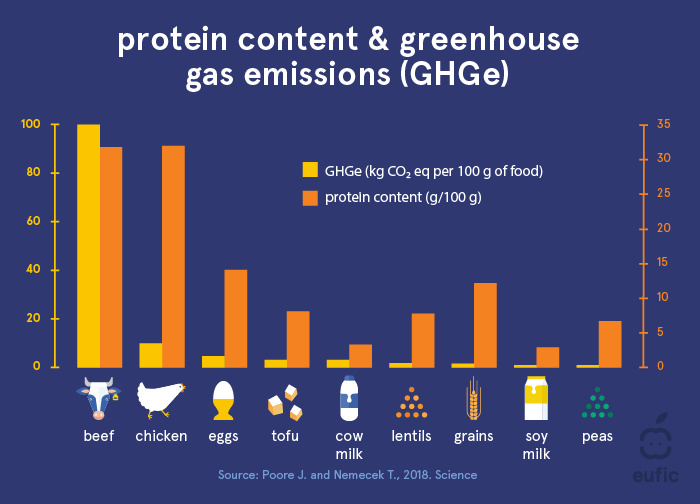
Figure 4. Protein content & greenhouse gas emissions (GHGe) of different foods. 9
Conclusion
Protein is essential for life; it supplies the essential amino acids needed for the growth and maintenance of our cells and tissues. Our requirement for protein depends on our stage of life and most Europeans consume enough to meet their requirements. As most people consume a varied diet, the quality and digestibility of the proteins they eat should not be a concern as long as the total amount of protein meets their daily needs. As we eat foods and not nutrients, we should choose protein-rich foods that not only provide essential amino acids but also support a healthy and sustainable diet.
References
- EFSA (2012). European Food Safety Authority, Scientific Opinion on Dietary Reference Values for protein. EFSA Journal 2012; 10(2):2557
- UK food composition database.
- Consultation, F.E., 2011. Dietary protein quality evaluation in human nutrition. FAO Food Nutr. Pap, 92, pp.1-66.
- Phillips, S.M., 2017. Current concepts and unresolved questions in dietary protein requirements and supplements in adults. Frontiers in nutrition, 4, p.13.
- Leidy, H.J., Clifton, P.M., Astrup, A., Wycherley, T.P., Westerterp-Plantenga, M.S., Luscombe-Marsh, N.D., Woods, S.C. and Mattes, R.D., 2015. The role of protein in weight loss and maintenance. The American journal of clinical nutrition, 101(6), pp.132
- Cruz-Jentoft AJ, Sayer AA (2019). Sarcopenia. The Lancet. 393 (10191): 2636-2646.
- Jäger R., Kerksick, C.M., Campbell, B.I., Cribb, P.J., Wells, S.D., Skwiat, T.M., Purpura, M., Ziegenfuss, T.N., Ferrando, A.A., Arent, S.M. and Smith-Ryan, A.E., 2017. International society of sports nutrition position stand: protein and exercise. Journal
- World Cancer Research Fund/American Institute for Cancer Research. Continuous Update Project Expert Report 2018. Meat, fish and dairy products and the risk of cancer.
- Poore J, Nemecek T. (2018) Reducing food’s environmental impacts through producers and consumers. Science Vol. 360, Issue 6392, pp. 987-992
- FAO and WHO. 2019. Sustainable healthy diets – Guiding principles. Rome

